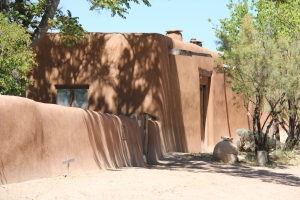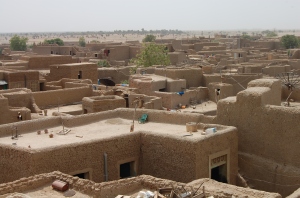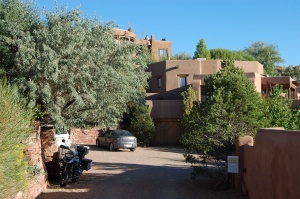For the past few years when I’ve mentioned Mali, people would do a mental double-take. Had they heard me right. “Bali?” they’d ask. “No, Mali, in West Africa”, I would reply. Now everyone, at least almost every one, has heard of it for the most tragic of reasons. It is at war and it’s front page, heart stopping and brutal.
Since last March over half of the country has been partitioned by Tuareg’s and Jihadist rebels with links to Al Qaeda The main cities in the North have become no go zones. The northern peoples have been suffering terrible human right abuses for nearly a year, oppression especially against women, against musicians – the performance or playing of music is banned. Young people, doing young people things, such as holding hands, smoking or God forbid drinking, have had a hard time of it. Justice is metered out in barbaric and unjust ways. Trial by thug. Life is intolerable under this severest of Sharia Laws, for the kind, trusting, open hearted-open minded people of the region. Many many thousands have been forced to flee.
The French are right now grabbing world attention by pounding the rebels, striking them by air and engaging them on the ground, with Malian military personel and brave journalists including my man, reporting and filming. The conflict zones are at two points – either side of the UNESCO world heritage designated town of Djénné. The inhabitants of Djénné are scrambling to leave and there is much discomfort and feeling of vulnerability for those living in Ségou the second most important and normally the most tranquil of cities – only 100 miles from the nearest conflict point at Diabaly.
Andy Morgan, a friend of mine has writen an insightful article for CNN here: http://edition.cnn.com/2013/01/18/opinion/opinion-morgan-mali-music/index.html?iref=allsearch
If you are new to my blog, please, if you’ve a mind to, browse back to see many pieces written about Mali during my six long stays in the past four years. My view is that of an artist, experiencing the richness of the culture and delighting in the similarities and the surprises. It all began with a ‘once in a lifetime trip’ to the Festival of the Desert, in 2009 and much to my surprise, I found a place where my spirit danced, and I returned again and again for extensive periods.
I always loved the music, but I fell in love with Mali, the people and their many cultures. I have never felt so at home or so welcome. That is my true connection – with the people.
My last trip, last September (2012) was for one month. Already a UK foreign office ‘red zone’, I had to be careful. My UK friends (even my ex-husband) had one after the other attempted talking me out of going, but I felt I knew Mali well enough to follow my gut and keeping one ear to the ground, backed up by having a boyfriend working in the news media, who would be the first to hear of any trouble. So to avoid any problems should they arise, I stayed in the south and travelled further south into the heart of Wassalou, saw the green and abundant lands where the rains had blessed them, spent time hanging out and photographing in Bamako, teaching English to girls and at Kirina music school, harvested the family peanut crop and visited an apocalyptic looking gold mine.
My relationship with Mali is deep and I’ve been incredibly fortunate. I’ve studied with the Master Mud Masons of Djénne – an all male preserve (am the first woman ever to be invited to be in their association); designed costumes for my all time favourite Malian singer, Salif Keita and joined him several times on stage; I have worked with and met many of Mali’s top visual artists; been wined and dined in Paris by the recently ousted Prime Minister Cheick Modibo; my photos of Oumou Sangaré are about to be the cover for her new single and some of my painted earth work is permanently exhibited in Ségou. Subsequently, I’ve exhibited several times within the Festival of the Niger in Ségou and have been invited to join the African Artists again this year in February.
I now run a charity called Send a Book to Mali purely because there simply are not enough books out there – it’s such a terribly poor country – people have to choose between feeding their kids hungry bellies or their minds.
I had big hopes of starting to build a mud building for myself this year and would be teaching literacy and English and running mud architecture courses from it. All that is impossible right now, but my woes are but small in comparison to others. Racial tensions have erupted, and there is a huge economic and political migration to the already over busy and terribly polluted capital Bamako. Everyone is A LOT POORER – we are talking serious poverty.
I’m particularly saddened by how it has affected every one of my friends and family out there. All I can do is offer prayers for peace, and show encouragement and solidarity, but for the first time I have decided not to go back – not right now. I will wait until things are a little more settled again – I hope very, very soon.
The coup government down south has been acting oddly – it seems to be schizophrenic, never quit sure whether it is a dictatorship or it not. Politicians seem to have the appearance of freedom, which can be suddenly whisked away. The sudden and enforced exit of my friend, the ex Prime Minister, Cheick Modibo is a example of that. Thankfully, it’s confusion seems to be less important right now, as the international community including European countries are agreeing and actually beginning to help.
By many Malians, the French are seen as the oppressive post colonialists, but suddenly there is much jubilation in Mali, that at last someone has come to help!
I’m a peace lover at heart. I hate war. I also hate oppression and injustice. I hope that by the international forces coming to Mali’s aid, we can see a swift expulsion to the dark forces that have divided a beautiful and hopeful country.
























